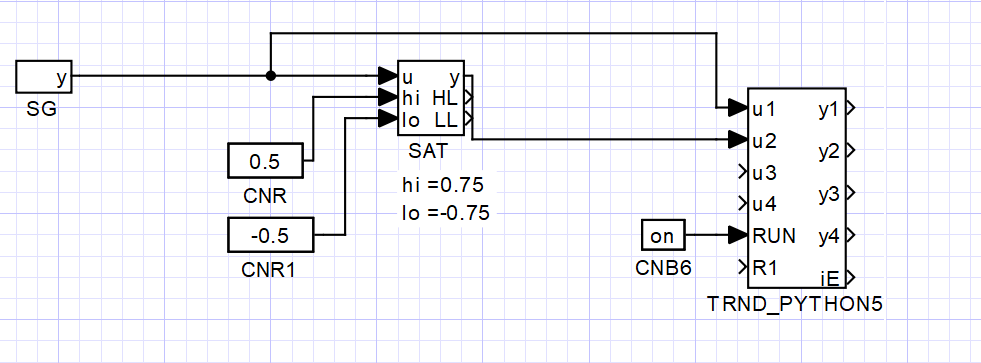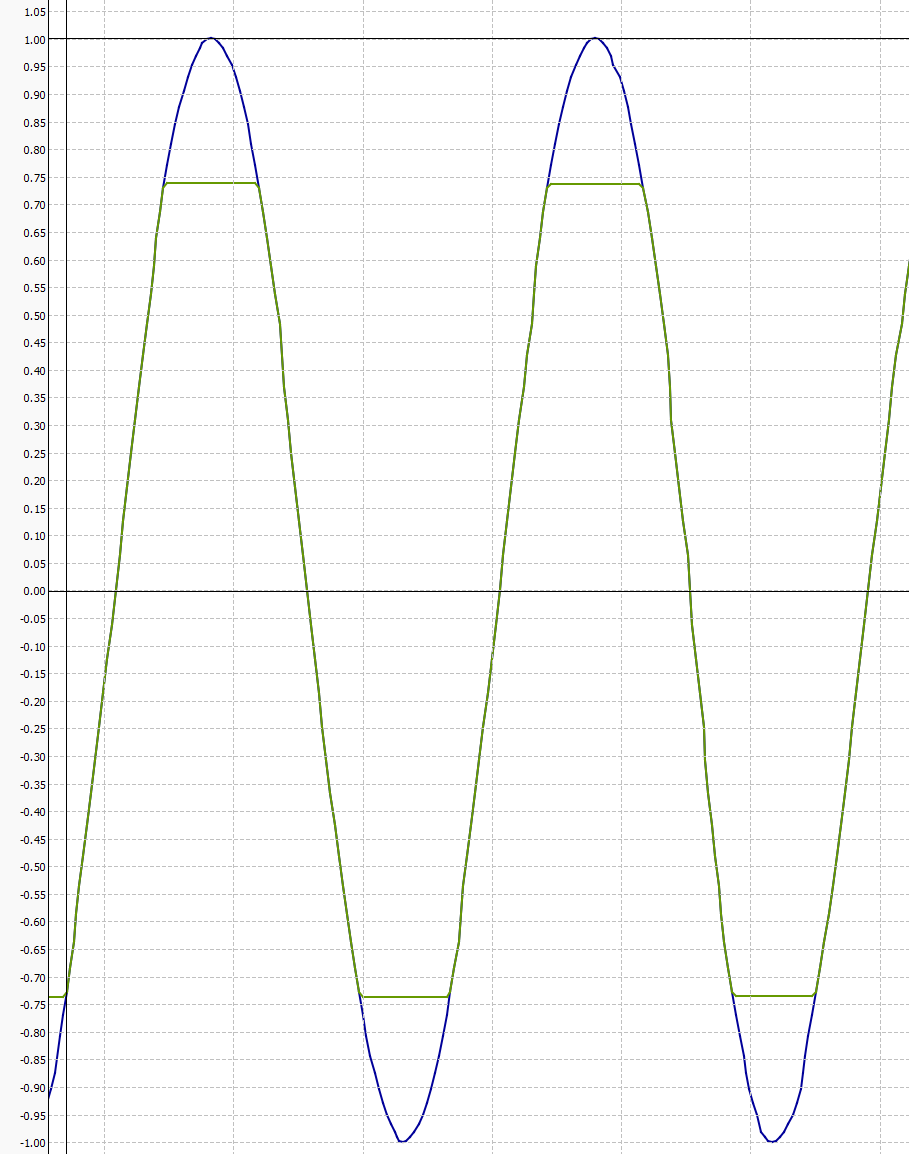Issue with the SAT block
-
Hi,
I am facing some troubles with the SAT block.
It should respect either variable limits or fixed limits, based on HLD signal.
However, in my project, only inner fixed limits (+0.75 , -0.75) are considered no matter if HLD is on or off.


-
@stepan-ozana Hello,
thank you for your report.Please, what version of REXYGEN are you using? I've tested it now on 3.0.4.17197 and everything seems to work. I'm attaching a printscreen and the project.
 myproject_exec.mdl myproject_task.mdl
myproject_exec.mdl myproject_task.mdlBest regards,
Jan -
Thanks. I tried both 3.00.2 rev. 16743 and 3.04 17159. Check out the video recording:
https://drive.google.com/file/d/1-A4vBMiOb91N9w5tX6H8bUDGmSjGPXCG/view?usp=sharing
-
@stepan-ozana
The problem is caused by a large value in the parameters tn and tp. The change occurs, but it is very slow. For a faster transition between values, set lower parameter values. For an immediate change, set 0. -
@Jan-Reitinger Thanks for explanation! I promise I will study the documentation in more details next time. However, still I have some remarks here.
Regarding SAT documentation:
"The maximal rate at which the active limits may vary is given by time constants tp (positive slope) and tn (negative slope)."
This statement is ambigous for me.
If we say maximal rate of the signal is affected by some parameter rate_max, then from technical point of view, higher
rate_max means higher allowable rate (1st derivative), thus indicating being close to immediate changes of the signal.
So if rate_max reaches infinity, immediate changes are allowed.Then we should say the maximal rate at which the active limits may vary is given by INVERSE OF time constants tp,
and rate_max = 1/tp, meaning that the meaning of logic in choice of parameters tp and tn is actually inverse.This is actually declared in the documentation of RLIM block as the steepest rise per second, and should be also repeated for for documentation of SAT to keep documentation consistent.
I tried series connection of CNR and RLIM, and changing CNR on the fly. If tp=0.1, then maximal slope is 10, and the new value of CNR is
reached in 0.1s, following linear ramp signal. This is OK, and similar functionality works for SAT block.Also, reading "time constants tp and tn" may indicate presence of some dynamics like first-order system 1/(tp*s+1) or 1/(tn*s+1), because this technical term is ususally used
when talking about dynamic systems. It would be much better to simply use "parameters tp and tn" instead to make things clear.